2024
- What is the Soul of Open Educational Resources?
- Why Free Learning Needs Free Artificial Intelligence
-
It doesn’t fix the root cause. Cooling the planet does not remove the CO2 which has accumulated in our atmosphere. It doesn’t stop that CO2 from acidifying the oceans and irreversibly destroying marine biodiversity.
-
SRM could make us complacent about dramatically cutting emissions.
-
Sulfur increases acid rain (harmful to many life forms) and will likely harm the ozone.
-
If SRM is poorly implemented, it could dramatically change weather and rainfall patterns. For example, if sulfur is not injected near the equator, it will not evenly mix into the stratosphere, causing uneven cooling and heating.
-
I get a kick when natural disasters strike in foreign countries.
-
I fantasize about a natural disaster wiping out most of humanity such that a small group of people can start all over.
-
I think society should be burned to the ground.
-
When I think about our political and social institutions, I cannot help thinking “just let them all burn.”
-
We cannot fix the problems in our social institutions, we need to tear them down and start over.
-
I need chaos around me—it is too boring if nothing is going on.
-
Sometimes I just feel like destroying beautiful things.
-
We need to uphold order by doing what is right, not what is wrong.
-
It’s better to live in a society where there is order and clear rules than one where anything goes.
-
Climate breakdown (not change, losing predictability and insurability - therefore access to capital markets)
-
Mass multi-polar, multi-perspectival transition (different kinds of transitions in different parts of the world)
-
Securitization of everything (pervasive in all of our conversations - everything driven by risk and security - energy, minerals, nutrient supplies)
-
Inequality and loss of solidarity
-
Hugh interest rate environment - inflationary economic context. Going to see more shocks to the economic system.
- Rise of environmental righy politics - localism, etc. will be co-opted by the far right. AfD / far-right of Conservative Party. Boundary words: who’s inside and outside the community.
- Labouring the transition - don’t have a labour force for the transition (great ideas, but can’t implement them).
- Flooding with information - c.f. McLuhan’s thought about confusing a system by flooding it with info. People just spot patterns.
-
Scale of the shift - only 7.2% of global economy is ‘circular’ and it’s declining. Need fundamental shifts in material economy.
-
Volatility in the system massively increasing - energy costs, food costs
-
New Allies - central banks, security services, intergenerational wealth, civil society. Need to have representatives from these types of organisations at this conference. New theories about asset ownership.
- Carry ‘vex money’ Always carry enough cash to get you out of danger or trouble if other methods fail – a taxi fare at least.
- Try coffee planking “Every morning I get up and make coffee for my wife and me. One cup takes one minute 18 seconds to brew, and every morning for the last 12 months I have planked for this period. Simple thing, using the dead time.” Anonymous reader
- Keep track of praise and thanks Reader Sarah, who works as a teacher, keeps every thank-you card she has ever been given: “When I’ve had a rough day at school, I flick through them to remember some of the lives I have had an impact on.” Another reader, Lewis, saves positive messages about himself: “When times are tough or I’m feeling down, I dig through it and remind myself of the good things people have shared with me over the years.”
Leadership, gender, and 'abusive supervision'

Prof. Ivona Hideg writes about a study she carried out during the pandemic around men and women leaders. While both experienced higher levels of anxiety, the amount of ‘abusive supervision’ was lower in women. The study was limited in terms of gender identification and sexual orientation, but it’s still interesting.
For me, this study supports what I have experienced in my career to date: women tend to be better at regulating their emotions, which the exact opposite of the stereotype of women in leadership positions.
In our research, we investigated 137 leader-report pairs working in Europe (primarily the Netherlands) in the service (38%), public (28%), or information and technology (23%) sectors during the early phases of the pandemic in 2020. The majority of leaders were men (56%), Dutch (59%), white (92%), and heterosexual (95%). The majority of direct reports were women (56%), Dutch (60%), white (89%), and heterosexual (88%). These leaders reported their emotions during the pandemic; their reports then rated their leaders’ behaviors.
Women leaders reported higher levels of anxiety regarding the pandemic than men leaders. There were no gender differences in feelings of hope toward the pandemic. When leaders’ anxiety was higher, so was their abusive supervision, whereas when leaders’ hope was higher, so was their family-supportive supervision. Critically, supporting our hypotheses, we found that these relationships between leaders’ emotions and behaviors depended on their gender. Leaders’ emotions were only related to their leadership behaviors if they were men, but not if they were women.
Namely, in line with gender role and emotional labor theory, women leaders engaged in low levels of abusive supervision regardless of how anxious they felt about the pandemic. By contrast, men leaders engaged in more abusive supervision, including behaviors such as being rude, ridiculing, yelling at, or lying to their reports when their anxiety was higher. Women leaders also provided high levels of family-supportive supervision irrespective of how hopeful they felt about the pandemic. By contrast, men leaders provided family-supportive supervision only when they felt more hopeful.
Source: Harvard Business Review
Water use literacy

We’ve just started on a Mozilla-funded Friends of the Earth project at the moment around sustainability principles for AI. There seems to be a lot of noise around the amount of water employed to cool the data centres used to train large language models (LLMs).
While we should always be cognisant of the amount of the energy and water used to provide us with new (and existing) technologies, I think there’s a lack of statistical numeracy going on here. For example, in the UK, 51 litres of water per person are lost due to leakage every day. That’s over a trillion litres per year!
Alan Levine shared a link to this visualisation in the thread where I was discussing this stuff on the Fediverse.
Source: Information is Beautiful
Against cyberlibertarianism

A long-ish and important post by Paris Marx in which he argues for a middle path between the ‘cyberlibertarianism’ of Silicon Valley and the China firewall approach. Just as the laws in most countries have a common based but a different flavour, so I think we’ll see an increasing alignment of what’s allowed online with what’s allowed offline in various jurisdictions.
Instead of solely fighting for digital rights, it’s time to expand that focus to digital sovereignty that considers not just privacy and speech, but the political economy of the internet and the rights of people in different countries to carve out their own visions for their digital futures that don’t align with a cyberlibertarian approach. When we look at the internet today, the primary threat we face comes from massive corporations and the billionaires that control them, and they can only be effectively challenged by wielding the power of government to push back on them. Ultimately, rights are about power, and ceding the power of the state to right-wing, anti-democratic forces is a recipe for disaster, not for the achievement of a libertarian digital utopia. We need to be on guard for when governments overstep, but the kneejerk opposition to internet regulation and disingenuous criticism that comes from some digital rights groups do us no good.
The actions of France and Brazil do have implications for speech, particularly in the case of Twitter/X, but sometimes those restrictions are justified — whether it’s placing stricter rules on what content is allowable on social media platforms, limiting when platforms can knowingly ignore criminal activity, and even banning platforms outright for breaching a country’s local rules. We’re entering a period where internet restrictions can’t just be easily dismissed as abusive actions taken by authoritarian governments, but one where they’re implemented by democratic states with the support of voting publics that are fed up with the reality of what the internet has become. They have no time for cyberlibertarian fantasies.
Counter to the suggestions that come out of the United States, the Chinese model is not the only alternative to Silicon Valley’s continued dominance. There is an opportunity to chart a course that rejects both, along with the pressures for surveillance, profit, and control that drive their growth and expansion. Those geopolitical rivals are a threat to any alternative vision that rejects the existing neo-colonial model of digital technology in favor of one that gives countries authority over the digital domain and the ability for their citizens to consider what tech innovation for the public good could look like. Digital sovereignty will look quite different from the digital world we’ve come to expect, but if the internet has any hope for a future, it’s a path we must fight to be allowed to take.
Source: Disconnect
Image: Tjeerd Royaards
We look through screens rather than at them

I don’t know if you’ve ever been to the place where a famous artist, or musician, or writer was born/worked/died? Although it might be interesting on a surface level, the likelihood is that whoever it was escaped their environment into a world of imagination.
Less tedious to look at are artefacts such as notes, scribbled ideas and marginalia. What happens to all this, though, with a purely digital workflow? What will future historians have to work with? I’m guessing famous writers are similar to me: I don’t write letters to my wife, I sent her messages on Signal; I don’t scribble down ideas on scraps of paper, I make digital notes; I don’t scribble in books; I highlight sections on Kindle or Google Books.
More importantly—for a biographer or anyone trying to tell a good story—the digital version of a hastily scribbled note pinned to the apartment door is less tangible and thus harder to romanticize. Text messages still don’t evoke adventure, even if they are the invisible engine behind most of what happens. They inherently violate the “show don’t tell” rule; they are all telling and no showing. […]
Analog media may not convey information as efficiently, but it has other benefits that may be easier to appreciate in hindsight. It is more decorative. It furnishes the physical environment in a way that digital technology—always evolving toward smaller, smoother, and lighter—does not. Or to put it another way: When digital technology is visible it’s usually because it failed to be invisible. The exception to this is the ever-present screen, which remains visible by definition, obviously; screens now account for nearly all of a computer’s tangible presence in the world. And screens are the exception that prove the rule because, as Byung-Chul Han has noted, we look through them rather than at them. Screens don’t decorate the physical environment so much as they invite us to stare through a window into a different kind of non-place.
Source: Kneeling Bus
More is always more where 'kitchen lipstick' is concerned

I’m a big fan of srirarcha sauce, so this ode by Jay Rayner to ‘lifting’ ordinary dishes with the addition of things you find in cupboards and fridges, spoke to me. My tips? Try coconut in your porridge, and balsamic vinegar (or pesto) on your next pizza.
Where dinner is concerned, God is always in the detail. By this, I mean the kind of dinner you scarf by yourself when it’s so late it’s almost early; the thing you eat when nobody is watching and the options are meagre but you still regard yourself as a person of high gastronomic standards, who sees the lowliest of food items as merely the opening salvo in a negotiation.
Which is how I found myself one night pelting a chicken and mushroom Pot Noodle which just happened to be lurking in the cupboard, with freshly sliced spring onions and batons of ginger, shiny black ribbons of finely chopped toasted nori and dollops of sriracha sauce and crispy chilli oil. And lo: the humble instant noodle has been elevated to the king of snacks, courtesy of my exquisitely honed culinary sensibility, and my endearing conviction that more really is always more.
[…]
A friend of mine describes doing all this as adding “kitchen lipstick”. I get her point: it’s the application of seemingly small details which vastly elevate the otherwise everyday. The original purchase suggests questionable taste. The adornments and embellishments restore one’s sense of self. Perhaps right now you have lurking in the fridge a pot of that grim corner-shop hummus, looking to stunt double as tile grouting? Why not go the full Ottolenghi and decorate it with toasted pine nuts, a thick dusting of smoked paprika, an extra dribble of that grassy olive oil over there and, for a final flourish, finely chopped flat-leaf parsley? Add fancy whole grain mustard and manuka honey to the cheapest of sausages, and glugs of madeira and a spoonful of dijon to instant gravy.
Source: The Guardian
Isolated places in the Lake District for wild camping
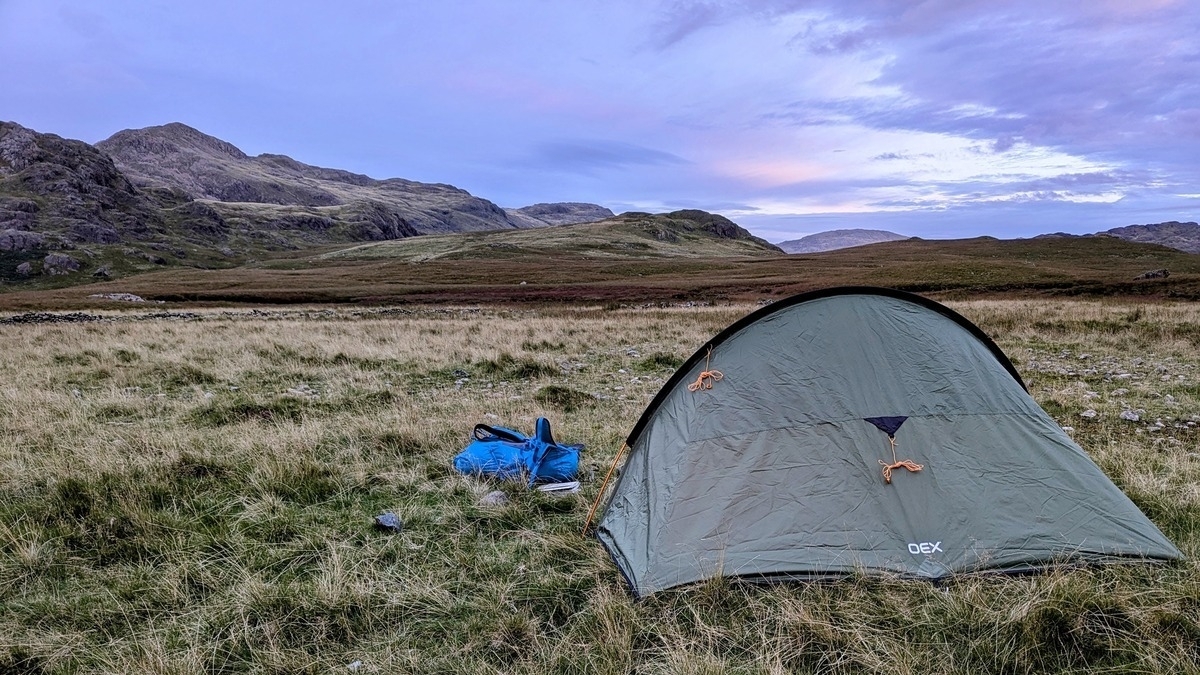
I took this photo on Friday night, just after setting up my tent in Eskdale. This is like the land that time forgot on the other side of the Hardknott Pass and somewhere that tourists to the Lake District seldom visit.
Wild camping, while officially illegal in England, is tolerated if you stay out of the way and use some common sense. Before I went, I looked at some other spots, and so wanted to share those with you for your enjoyment.
If you dream of a serene night by a gentle river, look no further than Eskdale. This elongated valley with the River Esk running through it offers perfect wild camping spots with stunning vistas of Scafell and Woolpack Point. During the day, Hardknott Roman Fort and Stanley Ghyll Waterfall are within reach.
Source: IDEAL magazine
Better Images of AI

Have you noticed that most news articles, blog posts, and social media updates that talk about AI use weird robots and unconvincing imagery? This website, which I discovered via Anne Hilliger seeks to address that.
There’s a wide range of Creative Commons-licensed options which I’ll be using to accompany stuff I write about AI — including this post!
Images representing AI as sentient robots mask the accountability of the humans actually developing the technology, and can suggest the presence of robots where there are none.
Such images potentially sow fear, and research shows they can be laden with historical assumptions about gender, ethnicity and religion.
However, finding alternatives can be difficult! That’s why we, a non-profit collaboration, are researching, creating, curating and providing Better Images of AI.
Source: Better Images of AI
AI and community communication

Stephen Downes has written a couple of articles relating Generative AI (GenAI) and Open Education Resources (OER). In the first one, he responds to a blog post by Heather Ross, who argues that the “sould of open is in danger.” Downes is having none of it, and responds to her point by point.
I’m in agreement with all of it, and particularly with how ‘gatekeep-y’ (my word) the OER community can be. (I say this with deep love and respect for what the OER community has achieved, but it is somewhat insular and ivory tower-focused.)
There are a few people who have created a cottage industry for themselves by opposing every aspect of artificial intelligence. I think they’re wrong, and have concerns about them misleading educators about AI. But Heather Ross’s article takes it a step further.
This is colonialism:
“No, you don’t get to wash over or destroy the work we’ve done and the great work still to come within the open movement.” If those encouraging the use of GenAI for open or for GenAI to replace open want to play a new game, that’s fine. We can’t stop you, but get off our field.”
It’s not your field.
And then, in the second post, which contains too many excellent and nuanced thoughts to summarise adequately, Downes sets his sights on what we mean by ‘free learning’. I’m sharing the part about colonialism because I think he gets to the nub of the problem: what people are often complaining about when they’re complaining about AI as ‘colonialist’ is that they are being colonised.
This is, of course, a problem, but the underlying issues are much more structural than people usually think. As Downes points out, what is necessary here isn’t to merely perpetuate the mindset of ‘giving’ people education, but rather to find ways “for a community to communicate with itself” in ways that reduce their reliance on other (usually more powerful) communities and interests.
The only real difference between what we’ll call ‘AI colonialism’ and ‘Good Old Fashioned Colonialism’ is in who is being colonized and who is doing the colonizing. In the case of GOFC, it was one nation colonizing another. In the case of AIC, it is one sector of the economy colonizing the rest. Though if we pause and consider for a bit we’ll find it’s not so different after all: in most societies, developed and otherwise, there is a structural colonialism, where one wealthier sector of society extracts value from the other, and then sells (or in the case of charity, ‘gives’) it back as a value-laden alternative.
I am so sympathetic with those who are opposing AI on these grounds, though my charity is extended only grudgingly to those who have only recently made the switch from colonizer to colonized. And my real loyalties are with those who have always been colonized - not only those in Eswatini (who have to their credit have resisted colonization better than many) but also those in my own society and those like mine, who contribute with their language(s), system of laws, culture and traditions, social knowledge, values and beliefs, etc., and find an educational system - and knowledge economy generally - sold back to them, inevitably changed by the values and beliefs of those who performed the appropriation.
This is an unsustainable model. Over time, it not only reduces the wealth of the subjected population, it also reduces the capacity of the provider (or ‘donor’) community generate wealth without these inputs (one imagines that a company like Disney would flounder without the privilege to incorporate and repurpose Arab or Indigenous culture and folklore).
[…]
Whether or not AI succeeds as a technology is moot; neither blocking AI nor regulating the industry will alter the model of aggregation and exploitation that it exemplifies. The knowledge, learning and information industries will continue to exist, and with or without AI will continue to harvest community language(s), system of laws, culture and traditions, social knowledge, values and beliefs, etc., and in some fashion reshape them according to their own values and sell them back to the community.
And this brings us back to what, to my mind, is the real purpose of open educational resources. They represent a means, mostly (though not exclusively) through digital technology, for a community to communicate with itself, to gather and share knowledge, to pass along its values and mores, its ideas and beliefs, and to be able to do this without reliance on external knowledge, information and learning providers.
[…]
It - to me, at least - was never about giving people an education (or giving them rights, or freedoms or anything else). It was about people being able to create these things for itself.
Sources:
Image: tribesh kayastha
Migration → Adaptation → Carbon removal → Geoengineering

I’ve already shared “technologist and climate geek” Ben James' most recent blog post about off-grid solar power. Digging into other posts unearthed one about his opinion that either “a country with no choice” or a billionaire will unilaterally start spraying sulphur into the stratosphere to help cool the earth. Or at least stop it heating so quickly.
Solar Radiation Management (SRM), as it’s known, is controversial, but has become less so recently. There’s an argument to be made that the $20 billion cost per year would be well worth it to buy us more time. I don’t know enough about this, but it’s clear that this is something that is likely to be on the table as a strategy, and probably won’t go through the UN or an international body first.
Sulfur disappears from the atmosphere quickly - it rains out after about a year. This means that once we’ve started SRM, it’s dangerous to suddenly stop. We need to keep spraying particles, all the time. If we suddenly stopped, the warming would spring back rapidly, causing a bad temperature shock. The correct way to stop is a gradual phase out.
Unfortunately, Solar Radiation Management (SRM) has some fairly gigantic problems.
[…]
Crucially, the biggest problems with SRM are probably not yet known. The side effects of putting sulfur into the stratosphere could be some of the most consequential unknowns in human history. Clearly, that’s a huge reason to do more research. But still - no matter how much research is done, when humanity tries to bend nature to its will, we can be sure that unintended consequences won’t be far behind.
[…]
People underestimate how controversial it can become to not do SRM. Imagine you are the leader of a country close to the equator. Crop failures, extreme heat, and city-destroying cyclones mean that your people are without drinkable water, have nowhere to sleep, and cannot feed their children. Mass social unrest and physical violence become normal for your country. SRM is the only action that you can take to turn off the disasters, and prevent your government being overthrown.
[..]
Ultimately, the decision to turn on the SRM machines will not be made by climate scientists, or carefully calculated risks. It will be made on the basis of nations rising or falling - by starving populations, revolutionaries, and leaders with their back against a wall.
[…]
Geoengineering is no replacement for getting our shit together. But there would be no honour in allowing the deaths of hundreds of millions of people, simply because they could have theoretically been avoided through more mitigation.
[…]
SRM might not make sense in your mind (it certainly doesn’t in mine). But do you view the world in the same way as a military dictator, “benevolent” billionaire, or leader of a starving country?
Source: Ben James
Some men just want to watch the world burn (and now there's research to prove it)
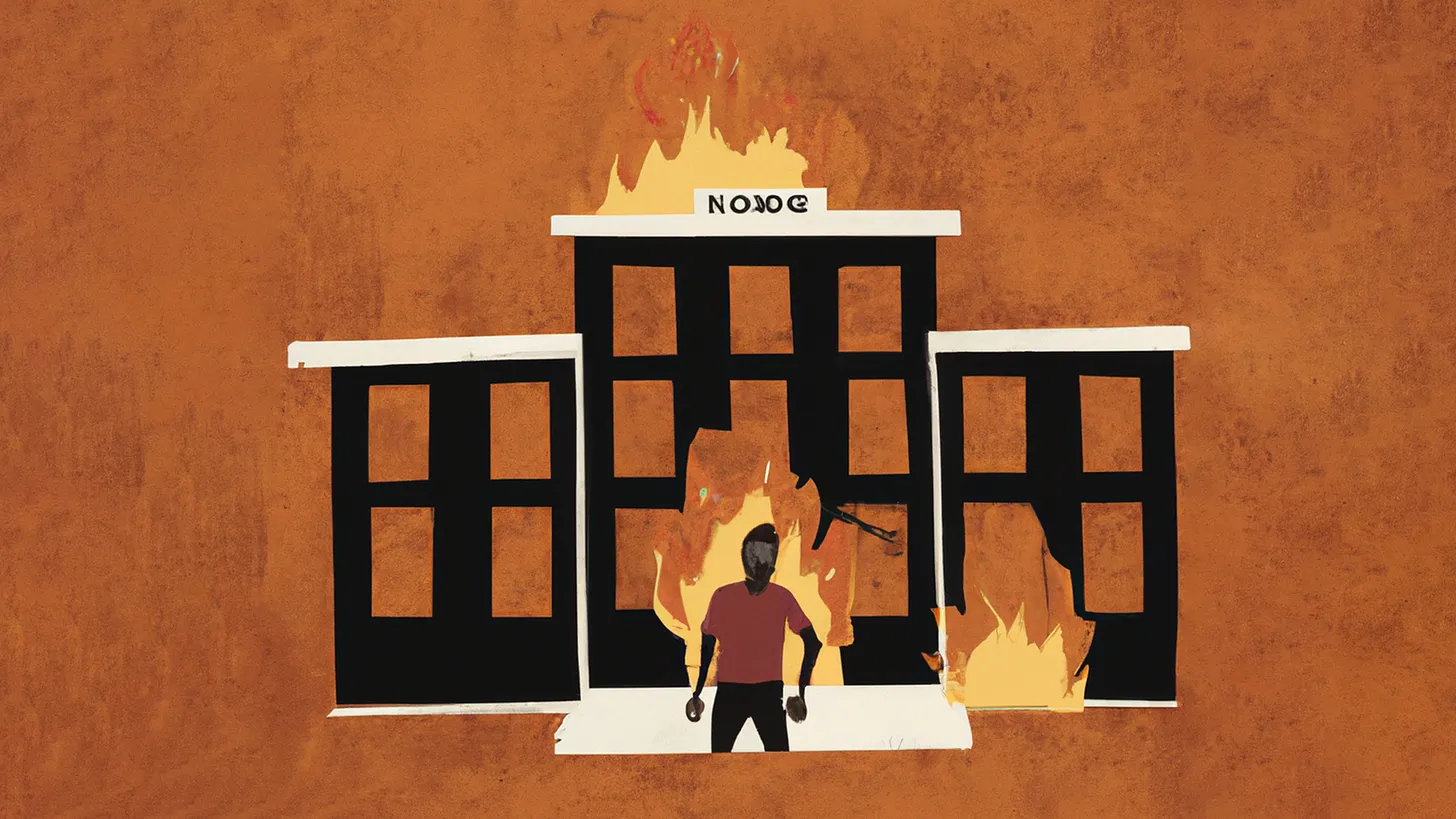
There’s a scene in one of my favourite films, The Dark Knight in which Arthur, Bruce Wayne’s butler, explains that “some men just want to watch the world burn.” There are some mighty fine memes as a result.
But it’s true. Sometimes it’s because they’ve got no power, so they might as well provoke something that might be entertaining. What have they got to lose. Other times, it’s because they’ve got all the power, and they have crazy theories about world overpopulation.
Either way, there’s new research into this mindset which shows that this is a psychological trait separate to others. I’m going to quote Brian Klaas at length, who explains in an excellent post.
These people, according to the new research, share a desire to “unleash chaos to ‘burn down’ the entire political order in the hope they gain status in the process.” This trait now has a name — and an established psychological profile.
It’s called the “Need for Chaos.” Understanding it provides an important insight into the destructive world of modern politics, in which the trolls have taken over, and politicians are no longer problem solvers, but are rather political influencers. It’s not about making the world better. It’s about burning down the world of people they hate.
[…]
In particular, people who score high on this metric tend to answer that they agree with several of these statements:
Then, to make sure that people weren’t just ticking the box next to every question mindlessly, the researchers included two additional statements that were the opposite of the other seven:
Interestingly, when they looked at other toxic personality profiles — such as psychopathy (being a psychopath) and social dominance orientation (an urge to assert social dominance) — they found that the Need for Chaos was a separate dimension to destructive individuals. It wasn’t just capturing the same impulse.
It’s a unique trait.
[…]
The Need for Chaos trait is particularly damaging for individuals who also feel that they’ve been failed by society, manifesting in their loneliness. For them, sowing chaos is a way to lash out against the system while asserting their power and trying to establish some form of social status.
[…]
That creates a strange dynamic, in which most white men—by virtue of their historically privileged position in society—tend to score lower on Need for Chaos than other groups. However, when white men do score high on Need for Chaos, it’s particularly dangerous. To put it plainly, the research suggests that of those who have this chaotic trait, it’s most destructive when that person is a white man.
[…]
The challenge for modern politics, then, lies with figuring out a way to deal with the inevitable perceived loss of social status that accompanies a society that’s becoming more equal, while mitigating the damage that these aggrieved chaos agents can inflict on everyone else.
Source: The Garden of Forking Paths
A State of Systems Shifting
A decade ago, I was going to so many in-person conferences that I had both a dedicated blog and Twitter account. These days, I attend rather less. No longer being on Twitter, and my conference blog long-ago being mothballed, I’m lacking a place to put reflections on events.
The purpose of this post isn’t even that, to be honest. I was just so blown away by Indy Johar’s presentation at the Systems Innovation Network conference today that I needed somewhere less ephemeral to put the notes that I managed to tap out with my thumb.
Don’t ask me questions about any of this. Not only am I still new to the whole world of systems thinking, but Indy seems to have a galaxy-level brain. Go and check out the Dark Matter Labs website.

Situating the moment:
Emergent term of ‘security economics’ changing market dynamics. ‘No transition without justice’ not simply a slogan, it’s important to be able to find a way forward (e.g. UBI or ‘universal basic nutrition’ experiments)
Difficult to price the material economy because of volatility.
Systems Practitioners shouldn’t use ‘community’ as too entangled. Be careful about language we’re giving power to.
Having to think about the constraints in the innovation landscape. Materially affecting our reality: UK can afford to build 14,000/year according to Paris Agreement carbon budget. Labour government has promised to build 350,000/year. Need to do things differently - open up new pathways (right to homes).
Persisting with illusions of infinite supply - instead we need to look at constraints because that’s where the innovation is.
Far right give you a meme to help you understand reality - they hijack a pattern analysis.
Westminster living in synthetic domain. Everyday politics to what we’re observing.
“Systems is about conversation not communication.” This means we can deal with more information than previously thought.
Security & Resilience of Systems
“Pre-emptive peace strikes” in places where there’s risk of systemic volatility.
Risk to whom? Rooted in assets and value, rooted in monetary frameworks. Preservation of power.
Uncrystalised risk in the system. If you put the risks on the balance sheets, the organisations aren’t solvent anymore. No longer viable. Collision and corruption therefore becomes a systemic risk - interested in survival.
(e.g. of Kristallnacht and insurance companies not paying for broken windows but instead paying ‘force majeure’ money to Nazi Party)
Explosion of sovereignties - more of an agentified world view. People don’t ‘assign’ their sovereignty to the state as they did in the past. Multitude of sovereignties.
Need to work beyond democratic renewal systems - legitimacy? “States are not the public”
Systems scaffolding - who owns the solution for portfolio (unless the system wants to implement, just remain as sticky notes). Need to work as system capabilities level.
Trans-systems work. Structural systems transformation.
Constraints - key shifter of innovation space.
‘Trap’ of the system boundary and the other. Need to build new language. Different dynamics to bounded models.
Systemic gap in price and value. Unpriced value in the system - going to be something that organised a lot of systems work (e.g. looking at single food product or wider systems level)
Deep Code failure at systems level. Language probel - use old world language which traps us. Also ‘property rights’ like to be challenged.
[Dark Matter iceberg graphic]
Building compound learning organisations and systems. Freedom and agency must lie in the actor for a system to be a system. That means learning. How do we build these?
Chief Learning Officers instead of CEOs. Coherence is formed not around risk but about capacity to learn. Higher overheads, but higher resilience and innovation capacities.
Crisis-driven system transitions. We’re going to live in a world where crises shatter Overton Windows. Emerging Theory of Change.
Big challenge is legitimacy. Mountains over mountains.
Single-point optimisation doesn’t work for an entangled planet. Need to focus on multi-point optimisation.
Multi-organisation organising. Contracting and coordination makes that difficult - what are the frameworks here?
Difficult for states to impose transition, needs to be negotiated.
System financing, structured economic systems, and para-colonizing financial capital. How do you move capital through a non-colonial lens? Capital is an extension of the dominion theory of the world.
‘System accelerators’
Intermediary agent-trust economy. How to build a different way to finance things. Turning energy meter into financial instrument? Public interest micro-trusts. Way of regulating the translation space. Weak signal.
Relationship with material economy - borrowing, not owning.
Freedom and systems - we need to build capacity for agents to be free (not in terms of market choice, but free in terms of being radically human). People and institutions feel trapped. Combined with volatility and uncertainty this creates fear.
First movers - food, material economy
We’re trying to make stuff circular that shouldn’t be. Biomaterial level? Needs to interact with nutrition system. Also river systems work (key fragility point)
Dark Matter Labs has new publication about portfolios - who owns them? New ways of organising to deal with portfolio allocation.
Problem of having the incumbents in the room when we’re talking about system transitions. 40% of the people who this issue will affect aren’t even born. Might be worth having empty seats to recognise this?
We don’t have data infrastructure - cities can’t calculate carbon emissions. Can’t just be ‘open data’ as requires security.
Operating in a deep war of values - e.g. billionaires willing to throw money at throttling the human race because they think this is the answer. Accelerating towards a ‘throttling event’. Very different perspectives on the table.
Our own governance - need integrity. Systemic question.
Financing the deep work - real issue, end up talking about surface level.
How do we move from communities of care based on fear (i.e. the far right) to communities of care based on love?
The future is off-grid solar
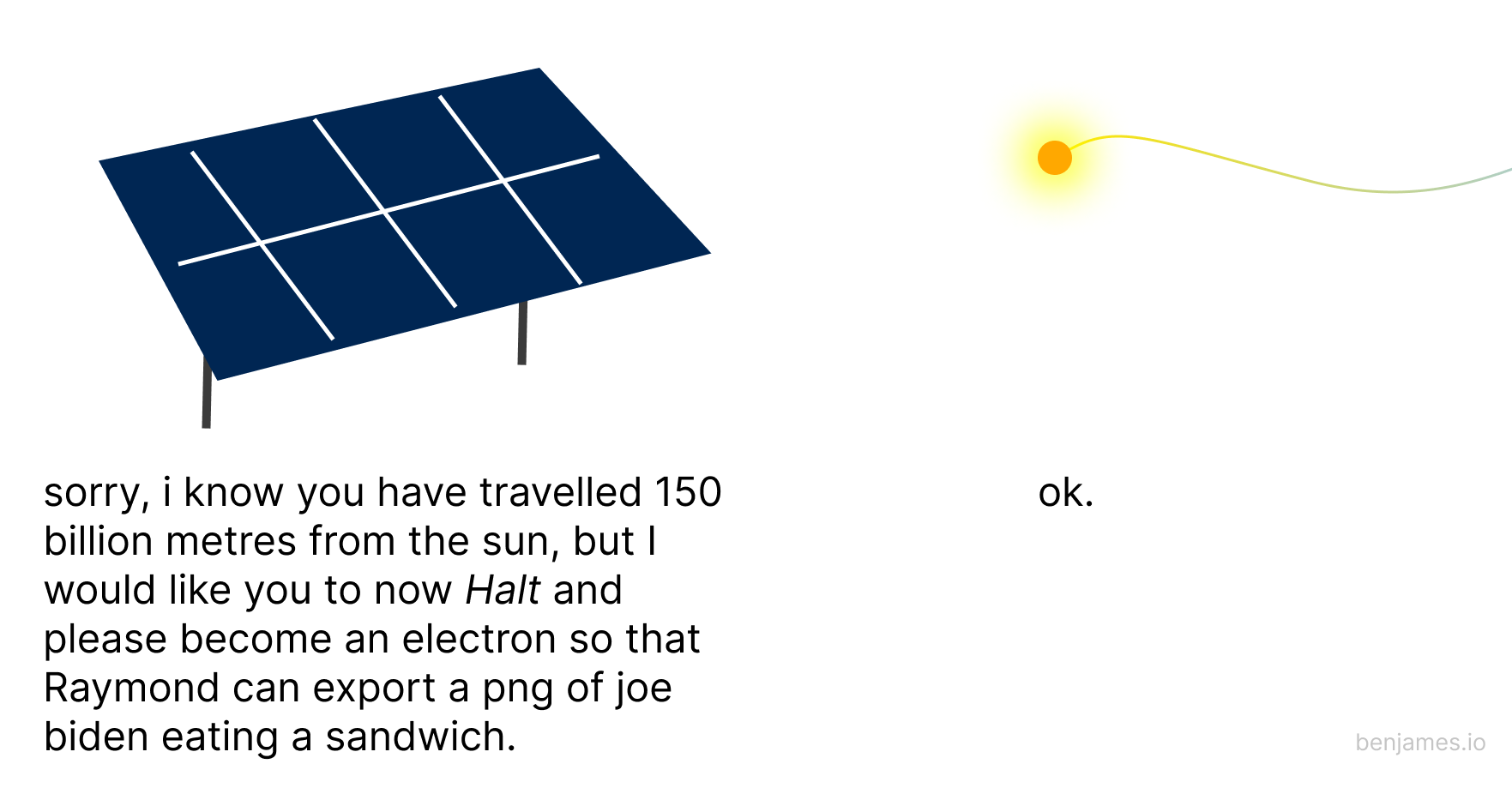
I’ve read some of the thoughts in this post via Low-Tech Magazine especially around the DC/AC/DC conversion being pointlessly lossy. However, this is the first I’ve read of being able to use excess solar power to create other forms of energy.
[S]olar deployment is accelerating at breathtaking speed. Most of the world’s solar power was installed in the past 30 months. In fact, China installed more solar in 2023 than the US has installed in history.
In the UK in 2024, I can go online and buy a solar panel with the same dimensions as a fence panel, for only double the cost. In five years, the cost of solar will have halved again.
[…]
Solar will saturate the power grid, but that doesn’t mean that we’ll stop building it. It just means that we’ll use it off-grid.
[…]
The cost of solar energy in a sunny place is trending towards virtually-free.
This is solar’s opportunity to not just displace electricity supply, but also primary energy supply. Rather than simply supplying energy in the form it’s consumed (electricity), intermittent solar is so fricking cheap that it could manipulate atoms into fuels for subsequent consumption.
We’re talking about using solar to create synthetic kerosene for planes, clean ammonia for fertiliser, clean methanol for shipping, and maybe even synthetic natural gas for general purpose use.
These synthetic and ‘green’ fuels all rely on green hydrogen as a base ingredient. Green hydrogen is extraordinarily expensive to produce, and the only cost-competitive way to make it is off-grid solar.
[…]
Taking solar off the grid also has a few other major cost advantages. If you are ripping solar straight into a DC application, you can skip the costs and efficiency losses of inverting that power into AC. If you lose most of the balance of plant, power electronics, and the paperwork of a grid connection, you’re getting really cheap and fast.
Source: Ben James
How Bluey-Green Was My Valley?
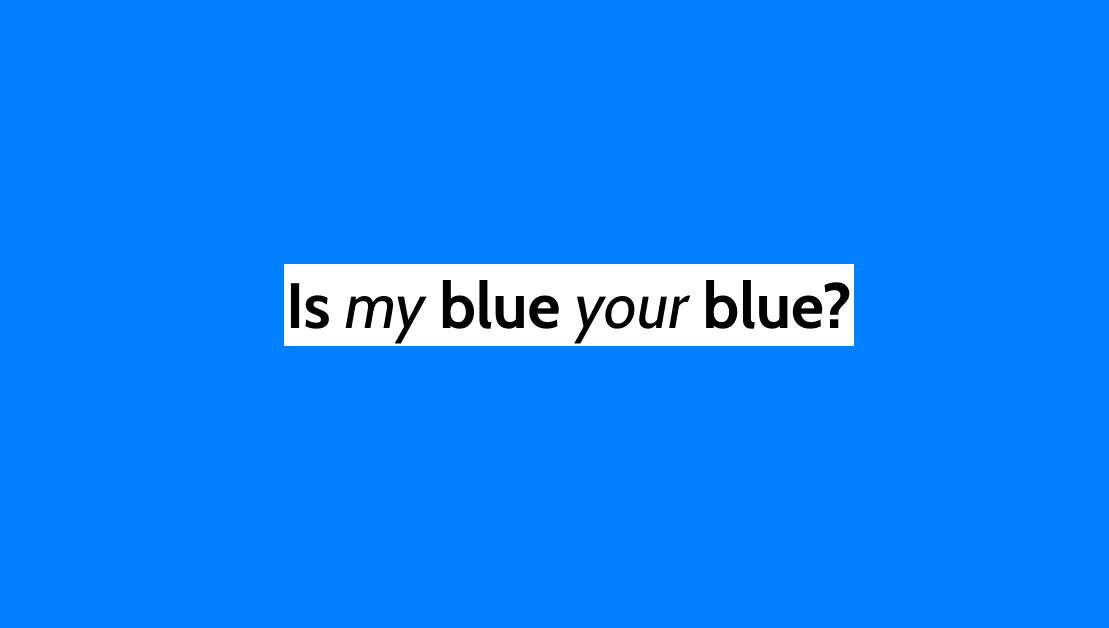
After discovering this site earlier in the week, I’ve shown it to my wife and my mother. I’m interested in the results, because they’re the two people in my life that I’ve most disagreed with when it comes to the question “what colour is that?”
It turns out that, when it comes to the blue-green continuum, my wife isn’t so far away from me. But my mother? According to her, something isn’t “blue” unless it’s very blue. Fascinating from a phenomenology-in-practice point of view.
Source: ismy.blue
So far, so dystopian

Although there’s plenty of people who would say otherwise, I think we’re in an antediluvian period with LLMs. We’re not seeing ads inserted or intentional misinformation being spread through mainstream offerings.
It won’t be long, though, and weak signals like this give us a glimpse of the future.
This study examines the impact of AI on human false memories–recollections of events that did not occur or deviate from actual occurrences. It explores false memory induction through suggestive questioning in Human-AI interactions, simulating crime witness interviews. Four conditions were tested: control, survey-based, pre-scripted chatbot, and generative chatbot using a large language model (LLM). Participants (N=200) watched a crime video, then interacted with their assigned AI interviewer or survey, answering questions including five misleading ones. False memories were assessed immediately and after one week. Results show the generative chatbot condition significantly increased false memory formation, inducing over 3 times more immediate false memories than the control and 1.7 times more than the survey method. 36.4% of users' responses to the generative chatbot were misled through the interaction. After one week, the number of false memories induced by generative chatbots remained constant. However, confidence in these false memories remained higher than the control after one week. Moderating factors were explored: users who were less familiar with chatbots but more familiar with AI technology, and more interested in crime investigations, were more susceptible to false memories. These findings highlight the potential risks of using advanced AI in sensitive contexts, like police interviews, emphasizing the need for ethical considerations.
Source: MIT Media Lab
Because capitalism
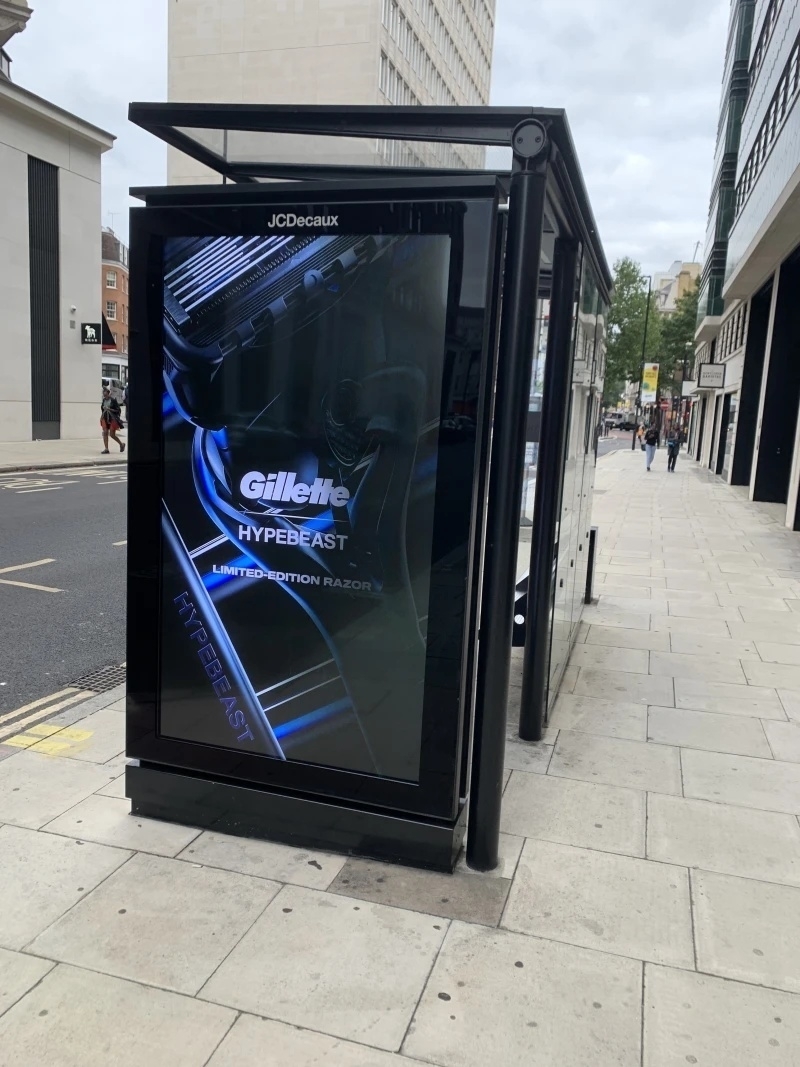
I enjoyed this rant that starts off talking about shaving being too expensive, and ends by giving examples of things that have replaced other things, and are worse.
(FWIW I’ve found that Bulldog razors seem to last a lot longer than other cartridge-based options)
So, does this matter? I assume that for most of the people reading this, the sums of money involved may seem pretty trivial. But I think the changes in the razor market are obviously bad, and reflect similar changes that can be seen in many other markets. We see new products launched which promise minor benefits in convenience, and which crowd out older, cheaper, and better products. Those older products are deliberately marginalised, and more money is captured from consumers without them really gaining any value from their expenditure.
[…]
Tea bags replace loose leaf tea. Allows for lower quality tea to be sold, diminishes the re-use of tea leaves. Also ludicrous product differentiation along the lines of ‘we have a special shaped tea bag’.
[…]
Subscription services like Hello Fresh, where you can pay well over the odds to have some vegetables delivered to you.
Source: John’s blog
There is an opportunity to...

I just saw that Tom Critchlow has taken a job, which is surprising given how much he waxed lyrical about the independent life. That post took me to one he wrote earlier this year about being useful rather than giving advice.
Giving advice starting with “you should…” is problematic, as I think we all come to learn through experience in both our personal and professional lives. It assumes you have all of the context, which is almost never true. Instead, pointing out “opportunities to…” is a much better framing.
Otherwise, as a consultant you’re telling them to do the very thing they don’t have the capacity to do. You’re telling them to draw the rest of the owl in the meme.
After all, it’s rare that a client doesn’t know have any clue what they need to do. Usually, in my experience at least, they need help choosing between options, and then capacity-building to get there.
Giving advice is an intensely personal thing. The feeling of learning something new sits right next to the feeling of shame for not knowing it in the first place. And worse, in the client/consultant relationship, the client is at least partially complicit in the situation when they come to you.
[…]
Giving advice is fraught even if the problem is well defined and you do know the answer. So when you’re working on strategic, ill-defined projects where there isn’t a right answer - giving advice is incredibly delicate, and in some cases not even possible.
So if you’re asking “You should…” to the client, stop and examine if you’ve properly defined the situation and provided evidence for the problem, to help the client deeply internalize the problem and win over the necessary stakeholders before you propose any kind of solution.
[…]
“There is an opportunity to…” This phrase is the key - it places the focus correctly on first defining the problem - and then providing evidence - before focusing on the solution. It allows us to articulate and quantify the opportunity while leaving room for the client to have say over resource allocation, for the client to shape the solution and for the client to determine prioritization and timing.
[…]
This all builds up to my personal consulting mantra: always work on the next most useful thing.
This mantra helps remind me that consulting isn’t about being right, it’s about being useful.
[…]
Always work on the next most useful thing. And that doesn’t always involve doing what the client asked for.
Source: Tom Critchlow
100 tips to sort your life out
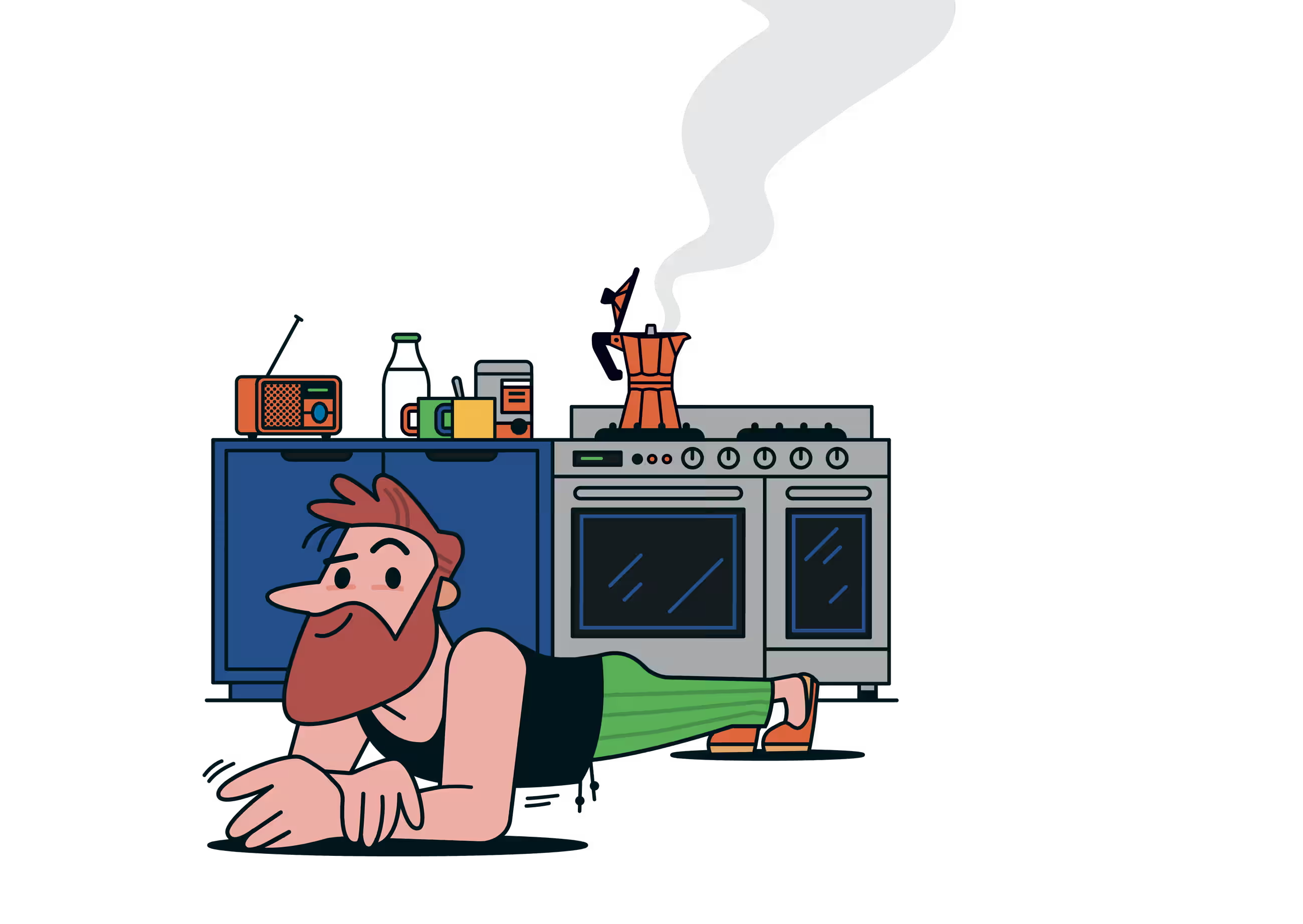
I was pretty amazed that Team Belshaw already does at least 75 of these 100 tips to sort your life out. Here are three that I personally don’t currently do, but which I might start doing.
[…]
[…]
Source: The Guardian
Your name in LandSat

We have satellite imagery of pretty much every area of land on Earth. This is known as ‘LandSat’ and this website allows you to spell out your name, or any other word, using rivers and other geographical features!
Source: Camp LandSat
The importance of context
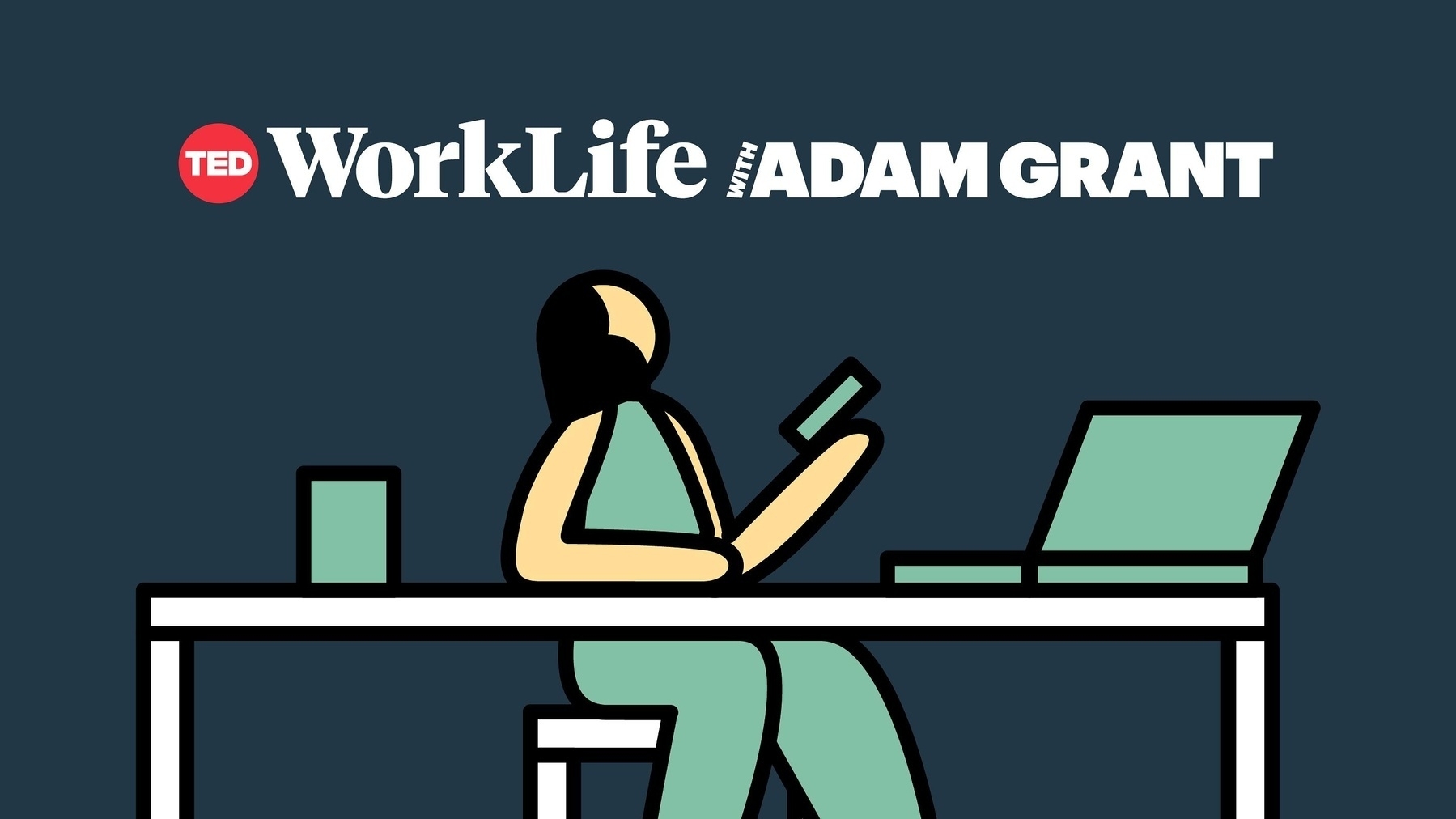
I haven’t actually finished listening to the whole episode yet, but I can already highly recommend this conversation between Adam Grant and Trevor Noah.
The conversation they have about context towards the start is so important that I wish everyone I know would listen to it.
Trevor Noah is widely admired for his quick wit. He’s hosted The Daily Show and the Grammy Awards, sold out huge arenas around the world, had numerous hit comedy specials on Netflix, and published a bestselling memoir, Born a Crime. One of the keys to his success is his ability to read people and communicate clearly. In a lively discussion with Adam, Trevor dives into the importance of context in everything from personal relationships to global politics. The two also debate the best way to improve American politics — and Trevor does a few impromptu impressions, including one of Adam.
Source: WorkLife with Adam Grant
Quote posting done right?
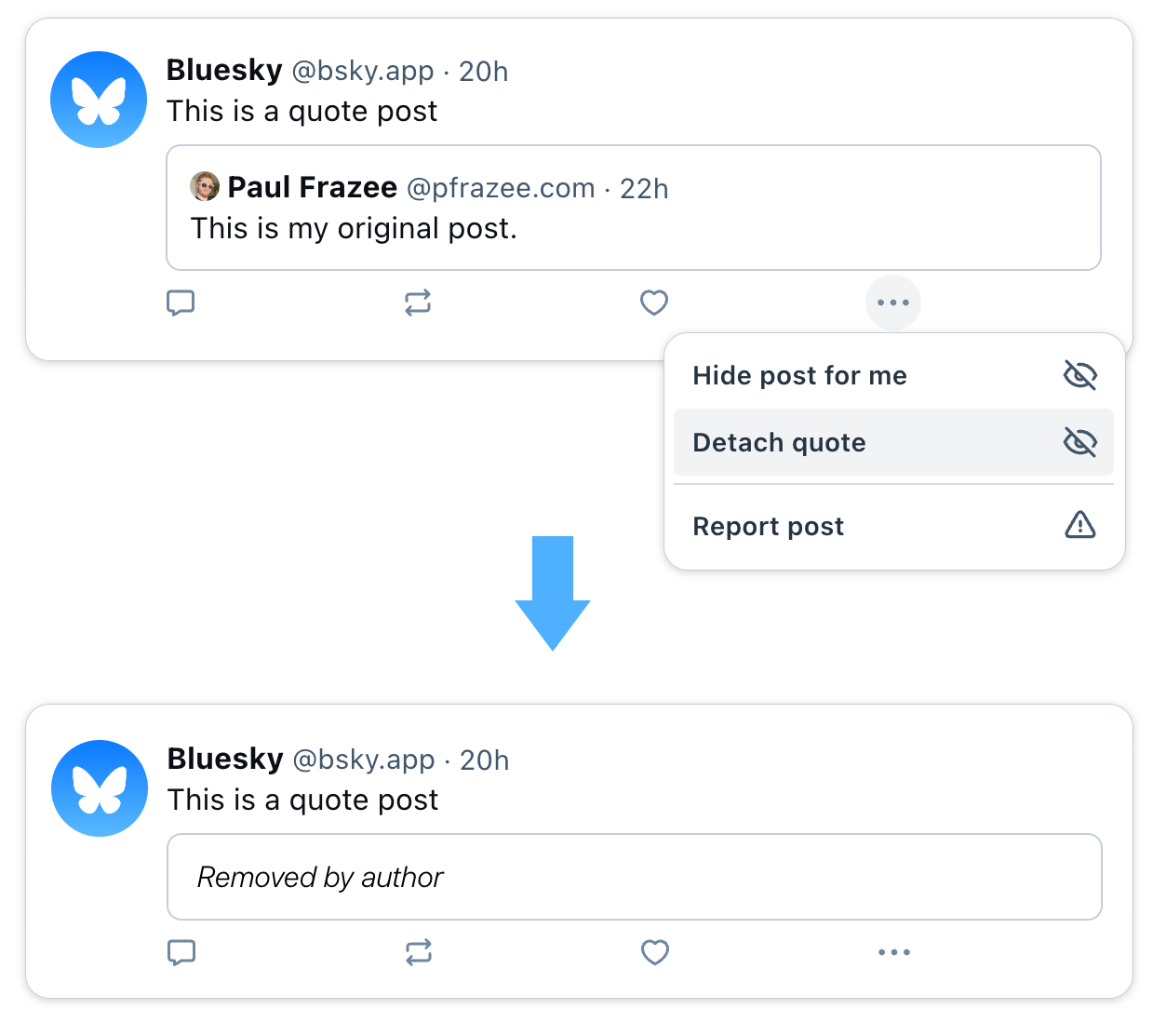
Although there are some positive use cases, one of the most toxic things about X/Twitter has been the ‘dogpiling’ that happens as a result of someone quote-posting something to their followers.
So much so, in fact, that Mastodon has long-resisted implementing them at all, although there are some workarounds in various Fediverse apps.
It’s fantastic to see, therefore, that Bluesky, a federated social network that runs on a different protocol to Mastodon, seems to have found a way to allow for non-toxic quote-posting.
(Since Elon Musk refused to comply with Brazilian law leading to X being blocked there, half a million new accounts have been created on Bluesky. Also, lots of people who I recognise from OG Twitter have started following me this week, which would suggest some form of tipping point…)
As of the latest app version, released today (version 1.90), users can view all the quote posts on a given post. Paired with that, you can detach your original post from someone’s quote post.
This helps you maintain control over a thread you started, ideally limiting dog-piling and other forms of harassment. On the other hand, quote posts are often used to correct misinformation too. To address this, we’re leaning into labeling services and hoping to integrate a Community Notes-like feature in the future.
Source: Bluesky blog